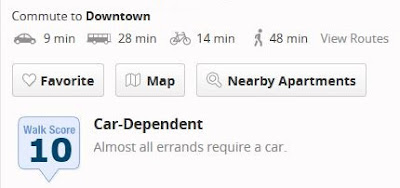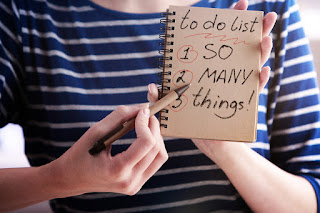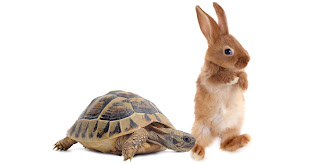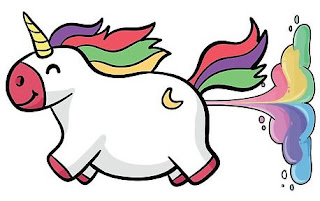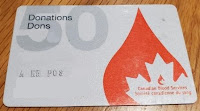Before you go, "EWWWW!!!"... hear me out. I've researched this six ways from Sunday and we've been composting our cat waste for the last six (almost seven) years. So far, no one's gotten sick... but then none of us is/was/will be pregnant. Women who are pregnant should not handle cat litter, period. But for the rest of us... read on!
Back in 2001, we added two little feline bundles of joy to our lives. Over the years, they have added a lot to our household... joy, laughter, cuddles and, as indoor cats, poop, peep and cat litter.
We started off by using your regular, run-of-the-mill clay-based cat litter. It clumped well which was important when you're trying to scoop poop and peep. It also made an unholy mess - clay dust everywhere, but that's the price you pay for having cats. At some point, I read an article which said that clay dust was exceedingly bad for kitten lungs... and presumably not great for cat and human lungs either.
 |
| Not our cat - but a typical cat poop position |
I looked at different options - compressed pellets, be they newspaper or pine, didn't really satisfy the feline need for digging. I don't know about your cats, but our two were always scratching and digging... turning... and then scratching and digging some more. Apparently it helps to get the bowels moving. After sufficient scratching and digging, they assume "the poop position". Anyone with a cat will know what I'm talking about. This is not a simple squat... oh no... this is a serious standing-as-tall-as-possible squat... but I digress.
I then came across wheat-based cat litter. It looked like cat litter and was very scratchable. We made the switch and the cats barely blinked at the transition. We used that for many years and then made another switch to walnut shell cat litter.
As for disposing of our cat waste - it had always gone into plastic bags and into the garbage. We didn't really think about it too much... until we moved to the Island in 2013.
 |
| Walnut shell cat litter |
At the time, the city in which we chose to live had a very explicit policy which prohibited any pet waste from being placed in the garbage bin. Apparently the bags of waste would get squished by the compactor and explode and there would be toxic cat litter bio-waste everywhere.
We had ourselves a problem. The city recommended paying a disposal company to collect the pet waste but that seemed expensive and ridiculous. I did some research. If the manure from chickens, rabbits, cows and horses was good for the garden... what about cat manure?
Turns out, there's a big difference. The above are mostly herbivores or insectivores, while cats are mostly carnivores (rats, mice, birds, etc). As such, cats can pick up all sorts of nasty diseases, bacteria and parasites, particularly if they are outdoor cats. However, if certain precautions were taken... people HAD successfully composted cat waste into feline manure. Our cats were indoor cats and didn't eat parasite carriers like mice, rats or birds sooo... I decided to give it a shot!
Turning cat waste into manure is a multi-stage process and requires patience and several different bins. When we moved into our house, there was an old 50-gallon metal drum at the back of the yard filled with leaf sludge. I emptied it out, added a few more holes to the rust-generated ones and moved it behind our shed. I also got a standard black compost bin, one of the rectangular ones because the round ones are useless, in my opinion. I was ready to begin.
Requirements
- Cat waste
- Cat litter - must be biodegradable - wheat, walnut, newspaper, wood - no clay, mineral or weird things
- Carbon/Nitrogen balancing agent - straw for carbon, coffee grounds for nitrogen
The Process
 |
| Stage 1 - 50 Gallon Drum |
|
The thing to remember for successful composting is that you want a nice mix of carbon and nitrogen. If you get too much carbon, the process stalls. If you get too much nitrogen, the whole thing stinks to high heaven.
In a regular compost pile, brown material is the carbon (dry leaves, straw) while green material is the nitrogen (kitchen waste, fresh leaves).
In a feline manure pile... the poop and peep are definitely nitrogen while the actual cat litter is carbon. In amending the pile, I have used straw (carbon) and horse manure or coffee grounds (both nitrogen).
Our process for cleaning cat litter is to scoop the poop/peep every day or so until the plastic bag was full (about once a week). We then dump the plastic bag into the drum. This material is mostly just cat waste with some litter mixed in so is quite high in nitrogen. Every month or so, we'd refresh the cat litter in the litter box by dumping the old stuff, which would be quite carbon rich.
 |
| Stockpiling cat waste bags |
I initially felt that the process had too much carbon and added horse manure and, later, coffee grounds from Starbucks. Horse manure is hard to come by... Starbucks coffee grounds are easy peasy, "take as much as you want!" This, however, tended to make the whole thing stink.
After a while, I eased up on the coffee grounds... and finally stopped them altogether. It seemed carbon might be the missing link...
Nowadays, I'll wait until I have four or five bags of cat waste, dump them all into the drum and then add a sprinkling of straw on top. That seems to do the trick. No stink and yet the decomposition process continues.
The drum has a partial lid on it... but still gets water when it rains heavily. You don't want a dry compost heap otherwise that stops the entire process as well.
Sooo... the drum slowly fills up... with two cats... it took about nine months to fill the drum. One cat is much slower...
Once the drum was full... I got out the shovel and garden fork and transferred the entire pile to the compost bin. During this process, everything gets loosened up a bit which is good... we need air in a compost pile. We want aerobic decomposition (in the presence of oxygen)... not anaerobic decomposition (which makes methane). The contents of the drum fit perfectly into the compost bin with a bit of room to spare. At this point, I could still see discrete cat waste material (mostly chunks of poop) and quite a bit of straw...
While the big drum had a few holes in the bottom, it generally did not get any worms into it. Maybe a few spiders building webs at the top... but no real compost-munching critters. Part of the problem is that cat waste is quite "hot" (ammonia and mineral salts) and regular earthworms struggle to survive in that environment.
I had read that earthworms will eventually adapt to survive and even thrive in a cat manure pile so I made sure that the black compost bin was sitting flush on the ground. We later had a problem with rats burrowing underneath the bin and into the manure (sigh)... so a few years ago, I installed metal mesh under the bin. Let's the worms in... keeps the vermin out.
 |
| Stage 2 - Compost Bin |
I'd then walk away and let the stuff percolate in the compost bin... until the 50-gallon drum was full again. At which point... the material in the compost bin had shrunk down by about 40-50%. I would then excavate the material out of the compost bin and put it into a regular green garbage bin.
The first time I did this... I was enthralled to see that there were worms in the compost bin! They were huge and a funny pink colour (not regular wormy colour)... but they were worms! I made sure that some went into the garbage can and some were left behind at the bottom of the compost bin. Starter stock for the next batch of manure-in-the-making.
The stuff that went into the garbage can had a much more consistent appearance with the occasional poop-shaped fragment still decomposing. But at this point... it was almost ready to go. I let the stuff in the garbage can sit for another couple of months and then declared it "ready".
 |
| Worms |
Where to Use Feline Manure
Now the big caveat - given that our little felines are carnivores and despite the fact that they are indoor cats... we followed advice and erred on the side of caution. Our feline manure does not go on any of our vegetable or fruit beds. It is reserved solely for flower beds.
Do the plants like it? Heck YES! The first time we spread it in a flower bed, that bed went berserk and we were amazed to see how lush and vibrant the growth was. Success!
Now... this process is not for the impatient. It takes a good 1.5 to 2 years from start to finish. This is essential in order to allow any bacteria in the cat waste to die off. The longer it sits, the better it is. And it's important to ONLY use this stuff on flower beds, not near anything edible.
 |
| Stage 3 - Almost ready to go |
Our city now permits a small amount of double-bagged pet waste in
garbage bins but still bans "large amounts". I'm thinking the occasional doggie doo-doo bag is fine... and maybe our cat litter would
be acceptable but... at this point, our feline manure benefits our
garden far too much to give it up.
I can't really articulate how much this process warms the cockles of my little environmentalist's heart. For starters we are keeping organic waste out of the landfill where it would normally decompose anaerobically and contribute methane to climate change.
At the same time, we are generating rich compost for our flower beds, which benefits not only our pocket book (don't have to buy compost) but also the bees and humming birds (who love all the flowers in our garden).
And... our cats get to play an active role in supporting our little urban homestead. Now... the next SmallStep is to figure out a way to eliminate the plastic bags from the whole process. Still working on that...




